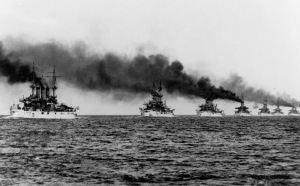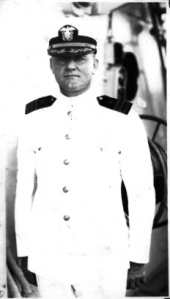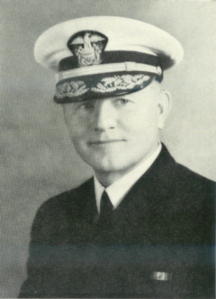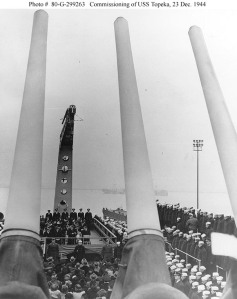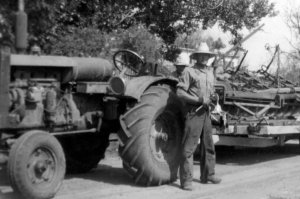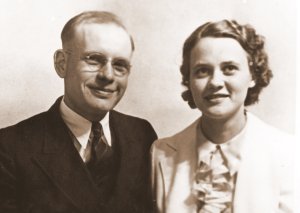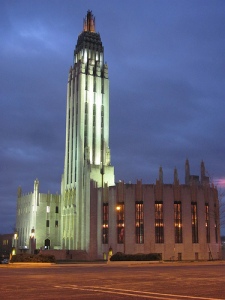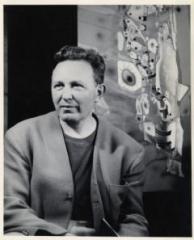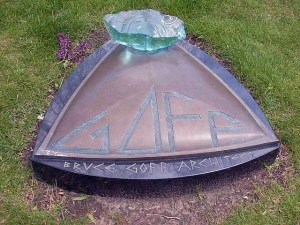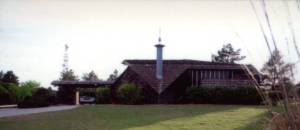 Phil Hahn was born in 1932 in Bloomington (2012 population: around 10) to Joe and Irene Hahn. He attended Bloomington Grade School and was a 1950 graduate of Osborne High School. In 1954 he graduated the University of Kansas. He first worked for Hallmark Cards and then became a comedy writer. He published articles and cartoons in Playboy and Esquire magazines and in Mad Magazine while also authoring six best-selling “adult children” books at the same time.
Phil Hahn was born in 1932 in Bloomington (2012 population: around 10) to Joe and Irene Hahn. He attended Bloomington Grade School and was a 1950 graduate of Osborne High School. In 1954 he graduated the University of Kansas. He first worked for Hallmark Cards and then became a comedy writer. He published articles and cartoons in Playboy and Esquire magazines and in Mad Magazine while also authoring six best-selling “adult children” books at the same time.
This led to being hired in the early 1960s by Hanna-Barbera, one of the leading cartoon production companies in Hollywood, as the writer for four animated series, including The Fantastic Four.
At the same time he submitted scripts for the shows Get Smart and M.A.S.H. In 1967 he became head writer for the series Rowan and Martin’s Laugh-In, for which he won an Emmy, the most prestigious award in television. Through his long career he earned five Emmy nominations for writing and was honored in Canada as well with the National ACTRA Award for his Canadian TV show Excuse My French.

Throughout the 1960s, 1970s, and 1980s he served as a head writer and/or producer of a large number of TV variety shows starring John Denver, John Davidson, Andy Williams, Sonny and Cher, Donnie and Marie, and Barbara Mandrell among others. Phil was head writer for the U.S. portion of the Live Aid Concert of 1985, that decade’s most-watched musical program.
In his career Phil authored well over 1,000 scripts for television and was considered one of the masters of comedy in Hollywood for nearly a quarter century. He wrote lines for such actors/comedians as Bob Hope, Don Knotts, Goldie Hawn, Dick Van Dyke, Mary Tyler Moore, Jack Lemmon, Gregory Peck, Burt Reynolds, and Bette Midler.
Phil has had 8 books published, including 3 humor books, four books of children’s humor, and one book of children’s humorous verse. In 2004, Henrietta the Homely Duckling was released, and he recently completed a memoir, Thank You for Flying American-A Cold War Love Story. He and his Writing Group have self-published two anthologies, Naked Wednesdays and Naked Wednesdays, Too.
Phil currently lives in Coos Bay, Oregon with his wife, Kathleen, and their twin daughters, Karlie and Kelsie.
* * * * *
The following story © 2002 Mark Evanier
ORIGINALLY PUBLISHED November 26, 1999:
Suppose you were given a choice of two activities and you absolutely, positively had to do one of them. Which of these would you pick?
One activity is to breakdance barefoot across a field strewn with shards of broken glass. The other activity is to write a network variety show.
For me, it’s No Contest. I’ve written network variety shows and give me the broken glass, anytime. To explain why, I have only to tell The Cesar Romero Story.
Years ago, there was a five-week Summer variety series on ABC called The Half-Hour Comedy Hour which you probably didn’t see. Odds are, you were watching The “A” Team on NBC, along with most of America.
The producers hired a terrific cast of then-unknowns, including Arsenio Hall, Jan Hooks, and Victoria Jackson and a large writing staff, myself included. They felt I was a handy guy to have around when something had to be written at the last minute…which, on a variety show, is the only way things are ever written.
After having head-written variety shows for several years, I had given up the vineyard for reasons that will become apparent. Still, the cast and crew of this show looked like they would be fun to work with…so I said yes. Fortunately for my health and sanity — what little I had left of each — I was not going to head-write. That task was left to a wickedly witty gent named Phil Hahn.
Phil got his start writing greeting cards for the Hallmark folks in Kansas City. He teamed up with a friend named Jack Hanrahan and they began writing for Mad Magazine. They also helped one of Hallmark’s star artists, Paul Coker, become a regular illustrator for Mad.
Later, Hahn and Hanrahan migrated to Hollywood where they quickly became one of the hottest comedy-writing teams in town, working on Get Smart, the original Rowan and Martin’s Laugh-In, Sonny & Cher and many more. They also wrote for a number of Hanna-Barbera cartoons of the late-60’s. There was a period where their credits could be seen on almost every show I watched.
They’d gone their separate ways, with Phil heading off to Utah for a time to produce various TV shows starring various people named Osmond. Now, he was back and doing a fine job organizing the scripting of an utterly chaotic enterprise.
Here’s a true story — Actually, everything I’m telling you here is true but I have to emphasize that this one is true because it’s so incredible.
One day while I was working on the show, my friend Russell Myers happened to be in L.A., visiting from outta-town, and he came by so we could go to lunch. Russell is, of course, the acclaimed cartoonist behind the wonderful newspaper strip, Broom-Hilda.
As we were heading out for a bite, he happened to glimpse Phil Hahn sitting behind a desk in his office with the door open. Russell took three steps past, stopped and said, “I know that man.”
I took him in and introduced him to Phil who said, “I know you from somewhere, too.” It took them maybe thirty seconds to figure it out.
Twenty years earlier, Russell Myers had worked in the Hallmark building in Kansas City, designing cards. Phil Hahn had the office across the hall.
Little, tiny world.
Near the start of production on The Half-Hour Comedy Hour, the producers went into Phil’s office and asked him to have us (the writing staff) start whipping up cameo spots for certain guest stars they hoped to procure. One of them listed the prospective guests for Phil: Burt Reynolds, Stevie Wonder, James Coburn, Donna Summer.
Phil pulled out a legal pad and wrote on it, “Four Cesar Romero spots.”
They said, “No, no. Cesar Romero isn’t going to be on the show. We’re going to get Burt Reynolds, Stevie Wonder, James…”
Phil just leaned back in his chair and said, “I’ve done a lot of variety shows and the producers always come in the first day and say they’re getting Burt Reynolds, and it always winds up being Cesar Romero. He’s always available. No matter who they say they’re going to book, they always wind up with Cesar Romero. So we’ll just write the spots for Cesar and it’ll save us a lot of work later, switching them over.”
But the producers insisted — “We’re getting Burt Reynolds!” — and told Phil to write sketches for the names they’d named. Phil complied but he had us write them like this…
BURT REYNOLDS SPOT
(Cesar Romero)
BURT (Cesar) ENTERS, SITS DOWN NEXT TO A BEAUTIFUL GIRL.
BEAUTIFUL GIRL
Oh, Mr. Reynolds! (Mr. Romero), I’ve seen all your movies…
BURT (Cesar)
Oh, thank you…
BEAUTIFUL GIRL
I especially loved you in “Deliverance.” (on the “Batman” TV show.)
And so on. Perhaps feeling challenged by Phil’s attitude, they set to work and managed to land, for cameo guest appearances, not only Burt, Stevie, James, and Donna, but also Lindsay Wagner, Richard Pryor, Robert Guillaume, Anson Williams, Henny Youngman, Tony Danza, Dick Clark, Bob Eubanks, David Horowitz, several others I’m forgetting and, yes, even Pia Zadora. Pia Zadora, by the way, is about eight inches tall.
These were cameo spots, meaning that the star came in, taped a bit or two and left. Generally speaking, this took from 30 minutes to two hours.
Usually, they had not seen the material in advance. They’d arrive and the producer would round up a couple of writers to demonstrate what had been written. We’d act out the bit for the guest and, if they had problems with it, do a fast rewrite to suit.
One day, I was sitting on the set with another writer — a clever gent named Mert Rich — when a frantic production assistant ran up to us. “You’re needed backstage,” she yelled. “Joan Collins is here!”
Mert and/or I muttered something about being fed up with guest stars who insist on having sex with the writers. The P.A. didn’t get that we were kidding and said, “No, no! You have to act out the sketch for her.”
We did. We went back to her dressing room and Ms. Collins watched in ice-encrusted silence as Mert and I performed a couple of short comedy bits. When we were done, we waited for her to say something — “I like it” or “I hate it” or anything. Instead, after a very long pause, she turned to Mert and said, “Get me a tissue.”
She pronounced it very British with no “h” sound in it: Tiss-you. As if it rhymed with “miss you” or “kiss you.”
Mert was baffled. He was a writer on the show — a good one, too — not an errand boy. Ms. Collins, however, was a very special guest star and it would not help matters if she got irate and stormed out. Obligingly, he went over to the Make-Up Room and fetched what she’d asked him to fetch.
She didn’t say “thank you.” In fact, I don’t think she ever said anything to either of us. But she did go out and tape the spots we’d demonstrated and then she departed.
A little later that day, John Davidson was in to tape a spot. He was right in the middle of it when he suddenly stopped and called out, “Hold it! Is Mert Rich here? Mert Rich?”
Mert was backstage but he heard John Davidson (whom he had never met) yelling his name and ran out. “You wanted me?”
“Yes, Mert,” John announced. “Get me a tiss-you!”
The whole crew broke up and Mert realized he’d been had. Someone — I wonder who – had briefed Davidson to ask that.
Thereafter, almost every single guest star on the show asked Mert for a tiss-you. Everyone on the crew asked, too. Mert would walk through the halls of NBC and total strangers would ask him for a tiss-you. He took to carrying a box of Kleenex around at all times and dispensing them to everyone who asked…and even a few who didn’t.
The other cameo stars were all wonderful, especially Ricardo Montalban, who was just as nice as you’d want Ricardo Montalban to be. He actually did not care for the piece that had been written for him — not that it wasn’t funny but we had him playing himself and flirting with a cute blonde. That was a problem.
He graciously explained he had been married a long time to a very well-known actress. He had also worked for much of his career to improve the image of Hispanic characters in film, particularly to counter the stereotype of the “Latin Lover.” We could ridicule him in any other way we liked, he said, but he would prefer not to suggest that he would ever cheat on his spouse.
Ordinarily, when a star says he won’t do what you’ve written, what you want to say is, “Shut up and read the cue cards, you overpaid ex-waiter.” You can’t always say that, of course, but the thought does come to mind.
But Señor Montalban was so charming, we fell over ourselves to rewrite until he was satisfied. He was the politest actor I’ve ever met in my life. He didn’t even ask Mert to get him a tiss-you.
Meanwhile, throughout weeks of taping, Phil Hahn was wandering around the stage, puzzled, muttering, “Where’s Cesar? Why isn’t Cesar here? He always shows up, sooner or later…” When the daily Call Time sheets were distributed, Phil would snatch them up and search for Cesar Romero, worrying that maybe he was ill or something…
Hahn was baffled because booking guests on a variety show is usually the killer headache. The ones the network likes are never available. The ones that are available, the network can’t stand. Any guests who are available and acceptable to the network want more money than you can possibly afford to pay them, plus they won’t rehearse. They want to show up, tape, and be gone in an hour, plus they want to read the material before they’ll commit.
The last demand is the killer for writers. I don’t know how many times I’ve been sitting there and the producer runs in and says, “We’ve got a shot at getting William Shatner if he likes the material and if we’ll let him sing. Write something up!”
So I, dutiful Head Writer that I am, work with the staff and cobble up a sketch in which Bill gets to sing, gets to squeeze some pretty ladies, and gets all the laughs…but before it’s even done, in rushes the producer who says, “Shatner’s just left to do a film in Europe, but I think we have a shot at getting Fran Drescher if she likes the material. Switch the Shatner bit.”
— to which I protest, it can’t be done: We have Star Trek jokes in there, T.J. Hooker jokes, Rescue 911 jokes…and the producer says, “Look, I promised Drescher’s agent I’d have some pages over there, this afternoon. Write something.”
You think I’m exaggerating? I swear this is true: On one show I did, the network wanted us to get Penny Marshall and her then-hubby, Rob Reiner, to guest. We wrote a sketch for the both of them — a very funny sketch, I thought. Then Rob decided he wasn’t available so we rewrote it for Penny alone. Okay, fine. Then Penny wanted too much money but, luckily, Sally Struthers was available. Okay: Out Penny, in Sally.
We rewrote the sketch again for Sally (not a huge change) and Sally actually showed up to rehearse for about an hour. Then she got a movie to do so good-bye, Sally. Now, who could we get? How about Erik Estrada? Fine. Out Sally, in Erik. We had to rewrite the sketch from Sally to Erik who is, after all, almost the exact same type (?). Then the network called and said they wanted Penny in the show so much, they’d chip in for her fee. So then we went back and rewrote the Erik sketch so it was Erik and Penny, both.
Done? Nope. Penny then decided she didn’t want to be in the same sketch with Erik. She wanted her own sketch. So we put the Erik sketch back the way it was, wrote a whole new sketch for Penny and trimmed everything else in the show to make room for the Penny sketch.
I don’t know how many times we rewrote that sketch. A secretary told me it was 32 and it may have been. And remember that every rewrite involved costumes and sets and props and music cues and cast approvals and censors and migraines galore.
It’s like that on every show, night through day and back again. We stay up ’til all hours, trying to switch the Erik Estrada material to Sherman Hemsley without changing much because we tape in ten hours and there’s no time to build new sets or costumes or change music that’s already recorded.
The Estrada/Hemsley conversion is a true example and one of the easier ones I had to make. Another time, it was changing a part conceived for Buddy Ebsen to Florence Henderson. Yet another time, Leonard Nimoy cancelled and the producer said he’d find a replacement who was similar so we could use what was already written. He got Jerry Lewis. Now, are you beginning to understand why I stopped writing variety shows?
There are two Post Scripts to this tale. One is that The Half-Hour Comedy Hour did okay, given its competition, but not okay enough to warrant more episodes. Still, it helped Jan Hooks and Victoria Jackson get “discovered” for Saturday Night Live…and Arsenio Hall has done pretty well for himself, as have most of the other cast members and writers.
Post Script Number Two is a call I got a few months later from Phil Hahn. He was writing a variety show for someone and they told him, “Hey, we’re getting Bette Midler! Write something for her.” Phil forgot and actually wrote something for Bette Midler.
Weeping over the phone, he told me, “They just came in and told me they couldn’t get Bette and I had to switch the sketch around to the star they could get. You’ll never guess who it is…”
Yes, it was him. He’s always available.
(P.S. – I wrote the above article in 1984. Since then, Mr. Romero has passed away. This has only slightly cut down on his availability.)
* * * * *
THREE’S COMPANY – “CHRISSY’S NIGHT OUT”
Description: Jack defends Chrissy’s honor when a man who misunderstood her friendliness shows up at the apartment and no one knows he’s a cop.
Cast:
John Ritter – Jack Tripper
Joyce DeWitt – Janet Wood
Suzanne Somers – Chrissy Snow
and starring as the Ropers:
Norman Fell – Stanley Roper
Audra Lindley – Helen Roper
James Cromwell – Detective Lannigan
Credit:
Developed and Produced By:
Don Nicholl
Michael Ross
Bernie West
Directed By:
Bill Hobin
Michael Ross
Bernie West
Teleplay By:
Phil Hahn
Stuart Gillard
Story By:
Phil Hahn
Executives in Charge of Production:
Ted Bergmann
Don Taffner
Synopsis: Jack and Janet panic when they discover that Chrissy isn’t home yet from evening out with the girls from the office, and it’s three A.M. When Chrissy does get home she’s in tears because a cute guy she met at the Funky Fox bar has mistaken her friendliness for something else. A few minutes later the “cute guy” arrives at the apartment, and before he has a chance to identify himself as Detective Lannigan of the Vice Squad, Jack, in an angry burst of protectiveness, flattens him. Lannigan comes to and reads Jack his rights for having assaulted an officer. When Roper tells Lannigan he’ s been punched by a fairy, Lannigan decides his reputation would be better off if he bends the law a bit himself, and lets Jack off.
This episode is currently not available on home video. Watch for it on regular television.
* * * * *
PHIL HAHN’S CAREER TELEVISION CREDITS
“Mama’s Family” (1 episode)
Bed and Breakdown (12 March 1988) – Writer (written by)
“Punky Brewster” (1 episode)
Unhooking Henry (7 December 1987) – Writer (written by)
“Head of the Class” (1 episode)
Coach Charlie (4 November 1987) – Writer (written by)
Dolly
Writer
Season 1: Episode 13 1/19/1988
Season 1: Episode 12 12/13/1987
Season 1: Episode 10 11/29/1987
Season 1: Episode 8 11/15/1987
Season 1: Episode 5 10/25/1987
+ 6 MORE CREDITS
“Check It Out” (1 episode)
Otherwise Engaged (22 January 1986) – Writer (written by)
“The 1/2 Hour Comedy Hour” (1 episode)
Episode #1.1 (5 July 1983) – Writer (writer)
“Barbara Mandrell and the Mandrell Sisters” (1 episode)
Episode #1.1 (18 November 1980) – Writer (writing supervisor)
The Captain and Tennille
Head Writer
Season 2: Episode 23: The Captain & Tennille In Hawaii 5/5/1978
Season 2: Episode 22: The Captain & Tennille In New Orleans 4/3/1978
“Donny and Marie” (19 episodes )
Episode #1.1 (23 January 1976) – Writer (writer)
Episode #1.3 (6 February 1976) – Writer (writer)
Episode #1.6 (5 March 1976) – Writer (writer)
Episode #1.7 (12 March 1976) – Writer (writer)
Episode #1.8 (19 March 1976) – Writer (writer)
Episode #1.10 (2 April 1976) – Writer (writer)
Episode #1.11 (9 April 1976) – Writer (writer)
Episode #1.13 (23 April 1976) – Writer (writer)
Episode #2.3 (8 October 1976) – Writer (writer)
Episode #2.5 (22 October 1976) – Writer (writer)
Episode #2.11 (31 December 1976) – Writer (writer)
Episode #2.12 (14 January 1977) – Writer (writer)
Episode #2.14 (28 January 1977) – Writer (writer)
Episode #3.3 (7 October 1977) – Writer (writer)
Episode #3.5 (28 October 1977) – Writer (writer)
Episode #3.7 (11 November 1977) – Writer (writer)
Episode #3.8 (18 November 1977) – Writer (writer)
Episode #3.14 (3 February 1978) – Writer (writer)
Episode #4.3 (13 October 1978) – Writer (writer)
Three’s Company
Writer
Season 2: Episode 9: Chrissy’s Night Out (15 November 1977) – Writer (story) (teleplay)
“The Sonny and Cher Show” (33 episodes )
Episode #1.1 (1 February 1976) – Writer (writing supervisor) , producer
Episode #1.2 (8 February 1976) – Writer (writing supervisor) , producer
Episode #1.3 (15 February 1976) – Writer (writing supervisor) , producer
Episode #1.4 (22 February 1976) – Writer (writing supervisor) , producer
Episode #1.5 (29 February 1976) – Writer (writing supervisor) , producer
Episode #1.6 (7 March 1976) – Writer (writing supervisor) , producer
Episode #1.7 (14 March 1976) – Writer (writing supervisor) , producer
Episode #1.8 (21 March 1976) – Writer (writing supervisor) , producer
Episode #1.9 (28 March 1976) – Writer (writing supervisor) , producer
Episode #1.10 (4 April 1976) – Writer (writing supervisor) , producer
Episode #1.11 (11 April 1976) – Writer (writing supervisor) , producer
Episode #2.1 (26 September 1976) – Writer (writing supervisor) , producer
Episode #2.2 (3 October 1976) – Writer (writing supervisor) , producer
Episode #2.3 (10 October 1976) – Writer (writing supervisor) , producer
Episode #2.4 (17 October 1976) – Writer (writing supervisor) , producer
Episode #2.5 (24 October 1976) – Writer (writing supervisor) , producer
Episode #2.6 (31 October 1976) – Writer (writing supervisor) , producer
Episode #2.7 (7 November 1976) – Writer (writing supervisor) , producer
Episode #2.8 (14 November 1976) – Writer (writing supervisor) , producer
Episode #2.9 (21 November 1976) – Writer (writing supervisor) , producer
Episode #2.10 (28 November 1976) – Writer (writing supervisor) , producer
Episode #2.11 (5 December 1976) – Writer (writing supervisor) , producer
Episode #2.12 (12 December 1976) – Writer (writing supervisor) , producer
Episode #2.13 (19 December 1976) – Writer (writing supervisor) , producer
Episode #2.14 (14 January 1977) – Writer (writing supervisor) , producer
Episode #2.15 (21 January 1977) – Writer (writing supervisor) , producer
Episode #2.16 (28 January 1977) – Writer (writing supervisor) , producer
Episode #2.17 (4 February 1977) – Writer (writing supervisor) , producer
Episode #2.18 (11 February 1977) – Writer (writing supervisor) , producer
Episode #2.19 (18 February 1977) – Writer (writing supervisor) , producer
Episode #2.20 (25 February 1977) – Writer (writing supervisor) , producer
Episode #2.21 (4 March 1977) – Writer (writing supervisor) , producer
Episode #2.22 (11 March 1977) – Writer (writing supervisor) , producer
“The Sonny and Cher Comedy Hour” (58 episodes )
Episode #2.1 (27 December 1971) – Writer (writer)
Episode #2.2 (3 January 1972) – Writer (writer)
Episode #2.3 (10 January 1972) – Writer (writer)
Episode #2.4 (17 January 1972) – Writer (writer)
Episode #2.5 (24 January 1972) – Writer (writer)
Episode #2.6 (31 January 1972) – Writer (writer)
Episode #2.7 (7 February 1972) – Writer (writer)
Episode #2.8 (14 February 1972) – Writer (writer)
Episode #2.9 (21 February 1972) – Writer (writer)
Episode #2.10 (28 February 1972) – Writer (writer)
Episode #2.11 (6 March 1972) – Writer (writer)
Episode #2.12 (13 March 1972) – Writer (writer)
Episode #2.13 (20 March 1972) – Writer (writer)
Episode #3.1 (15 September 1972) – Writer (writer)
Episode #3.2 (23 September 1972) – Writer (writer)
Episode #3.3 (30 September 1972) – Writer (writer)
Episode #3.4 (6 October 1972) – Writer (writer)
Episode #3.5 (13 October 1972) – Writer (writer)
Episode #3.6 (20 October 1972) – Writer (writer)
Episode #3.7 (27 October 1972) – Writer (writer)
Episode #3.8 (3 November 1972) – Writer (writer)
Episode #3.9 (10 November 1972) – Writer (writer)
Episode #3.10 (17 November 1972) – Writer (writer)
Episode #3.11 (4 December 1972) – Writer (writer)
Episode #3.12 (11 December 1972) – Writer (writer)
Episode #3.13 (18 December 1972) – Writer (writer)
Episode #3.14 (6 January 1973) – Writer (writer)
Episode #3.15 (13 January 1973) – Writer (writer)
Episode #3.16 (20 January 1973) – Writer (writer)
Episode #3.17 (27 January 1973) – Writer (writer)
Episode #3.18 (3 February 1973) – Writer (writer)
Episode #3.19 (10 February 1973) – Writer (writer)
Episode #3.20 (17 February 1973) – Writer (writer)
Episode #3.21 (24 February 1973) – Writer (writer)
Episode #3.22 (4 March 1973) – Writer (writer)
Episode #3.23 (14 March 1973) – Writer (writer)
Episode #3.24 (18 March 1973) – Writer (writer)
Episode #4.1 (12 September 1973) – Writer (writer)
Episode #4.2 (19 September 1973) – Writer (writer)
Episode #4.4 (3 October 1973) – Writer (writer)
Episode #4.5 (10 October 1973) – Writer (writer)
Episode #4.6 (17 October 1973) – Writer (writer)
Episode #4.7 (24 October 1973) – Writer (writer)
Episode #4.8 (31 October 1973) – Writer (writer)
Episode #4.9 (7 November 1973) – Writer (writer)
Episode #4.10 (14 November 1973) – Writer (writer)
Episode #4.12 (5 December 1973) – Writer (writer)
Episode #4.13 (19 December 1973) – Writer (writer)
Episode #4.14 (2 January 1974) – Writer (writer)
Episode #4.15 (9 January 1974) – Writer (writer)
Episode #4.16 (16 January 1974) – Writer (writer)
Episode #4.17 (23 January 1974) – Writer (writer)
Episode #4.18 (30 January 1974) – Writer (writer)
Episode #4.19 (6 February 1974) – Writer (writer)
Episode #4.20 (13 February 1974) – Writer (writer)
Episode #4.21 (20 February 1974) – Writer (writer)
Episode #4.22 (27 February 1974) – Writer (writer)
Episode #4.23 (6 March 1974) – Writer (writer)
Ken Berry’s ‘Wow’ Show
Writer
Season 1: Episode 1: 7/15/1972
“Rowan & Martin’s Laugh-In” (40 episodes)
Season 2: Episode 13: Guest Star, Cameo Appearance
Episode #1.1 (22 January 1968) – Writer (writer)
Episode #1.2 (29 January 1968) – Writer (writer)
Episode #1.3 (5 February 1968) – Writer (writer)
Episode #1.4 (12 February 1968) – Writer (writer)
Episode #1.5 (19 February 1968) – Writer (writer)
Episode #1.6 (26 February 1968) – Writer (writer)
Episode #1.7 (4 March 1968) – Writer (writer)
Episode #1.8 (11 March 1968) – Writer (writer)
Episode #1.9 (25 March 1968) – Writer (writer)
Episode #1.10 (1 April 1968) – Writer (writer)
Episode #1.11 (8 April 1968) – Writer (writer)
Episode #1.12 (15 April 1968) – Writer (writer)
Episode #1.13 (22 April 1968) – Writer (writer)
Episode #1.14 (29 April 1968) – Writer (writer)
Episode #2.1 (16 September 1968) – Writer (writer)
Episode #2.2 (23 September 1968) – Writer (writer)
Episode #2.3 (30 September 1968) – Writer (writer)
Episode #2.4 (7 October 1968) – Writer (writer)
Episode #2.5 (14 October 1968) – Writer (writer)
Episode #2.6 (21 October 1968) – Writer (writer)
Episode #2.7 (28 October 1968) – Writer (writer)
Episode #2.8 (11 November 1968) – Writer (writer)
Episode #2.9 (18 November 1968) – Writer (writer)
Episode #2.10 (25 November 1968) – Writer (writer)
Episode #2.11 (2 December 1968) – Writer (writer)
Episode #2.12 (16 December 1968) – Writer (writer)
Episode #2.13 (30 December 1968) – Writer (script supervisor)
Episode #2.14 (6 January 1969) – Writer (script supervisor)
Episode #2.15 (13 January 1969) – Writer (script supervisor)
Episode #2.16 (20 January 1969) – Writer (script supervisor)
Episode #2.17 (29 January 1969) – Writer (script supervisor)
Episode #2.18 (3 February 1969) – Writer (script supervisor)
Episode #2.19 (10 February 1969) – Writer (script supervisor)
Episode #2.20 (17 February 1969) – Writer (script supervisor)
Episode #2.21 (24 February 1969) – Writer (script supervisor)
Episode #2.22 (3 March 1969) – Writer (script supervisor) , script supervisor
Episode #2.23 (10 March 1969) – Writer (script supervisor)
Episode #2.24 (17 March 1969) – Writer (script supervisor)
Episode #2.25 (24 March 1969) – Writer (script supervisor) , script supervisor
Episode #2.26 (31 March 1969) – Writer (script supervisor)
Birdman and the Galaxy Trio
Writer:
Season 1: Episode 25: The Menace Of Dr. Millenium 9/9/1967
Story:
Season 2: Episode 5: Galaxy Trio And The Peril Of The Prison Planet 10/28/1968
Season 2: Episode 7: Titan, the Titanium Man 1/20/1968
Season 1: Episode 10: Mentor, The Mind Taker 1/13/1968
Season 2: Episode 4: Galaxy Trio and the Sleeping Planet 1/6/1968
Season 1: Episode 40: Morto Rides Again! 1/6/1968
+ 18 MORE CREDITS
The Fantastic Four (1967)
Writer
Season 1: Episode 20: The Deadly Director 9/21/1968
Season 1: Episode 19: The Terrible Tribunal 9/14/1968
Season 1: Episode 10: The Mysterious Molecule Man 1/13/1968
Season 1: Episode 17: Blast Starr, The Living Bomb Burst 1/6/1968
Season 1: Episode 16: The Micro World Of Dr. Doom 12/30/1967
Galactus (16 December 1967) – Writer (story)
Prisoners of Planet X (14 October 1967) – Writer (story)
Menace of the Mole Man (9 September 1967) – Writer (story)
+ 15 MORE CREDITS
Get Smart
Die, Spy (30 March 1968) – Writer (teleplay)
The Hot Line (23 March 1968) – Writer (teleplay)
The Little Black Book: Part 2 (3 February 1968) – Writer (written by)
The Little Black Book: Part 1 (27 January 1968) – Writer (written by)
That Old Gang of Mine (2 December 1967) – Writer (written by)
The Space Ghost/Frankenstein Jr. Show
Writer
Season 2: Episode 18: The Spooktaculars 1/7/1967
Season 2: Episode 17: The Pilfering Putty Monster 12/31/1966
Season 2: Episode 16: The Monstermobile 12/24/1966
Season 2: Episode 15: The Mad Monster Maker 12/17/1966
Season 2: Episode 14: The Manchurian Menace 12/10/1966
+ 13 MORE CREDITS
OTHER TELEVISION CREDITS
Comedy Break With Mack & Jamie (TV Series)
Nashville Palace (TV Series)
Osmond Family Show (TV Series)
John Davidson Show (TV Series)


